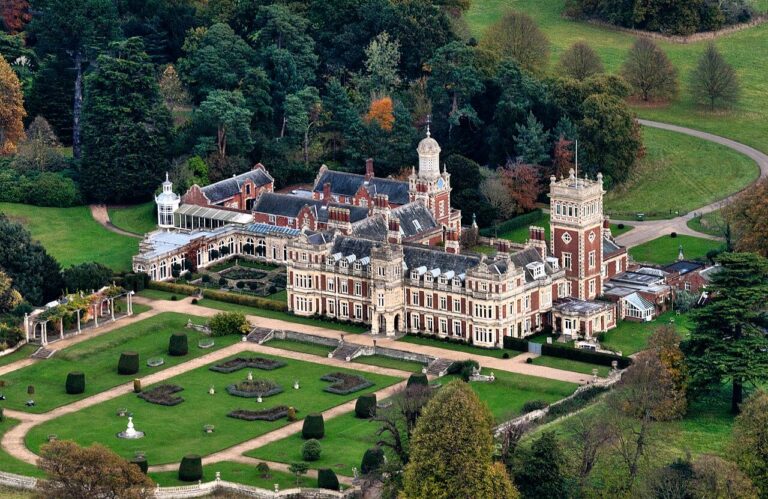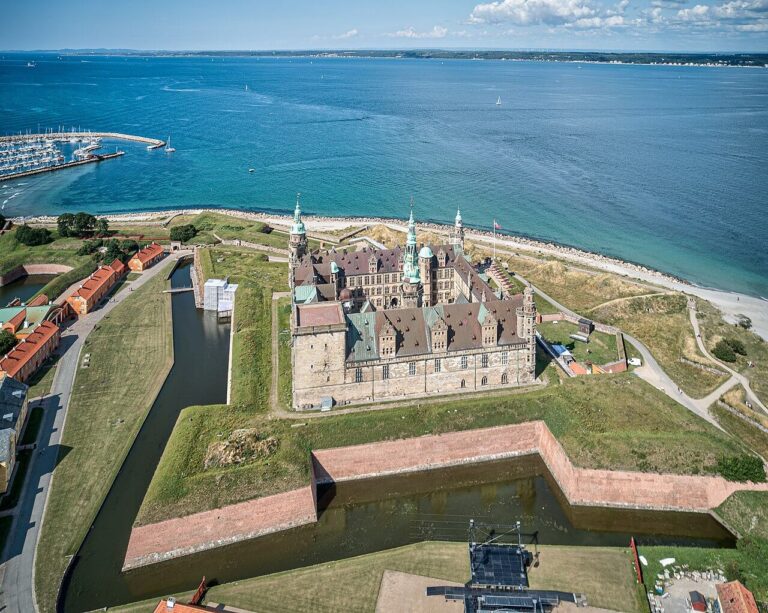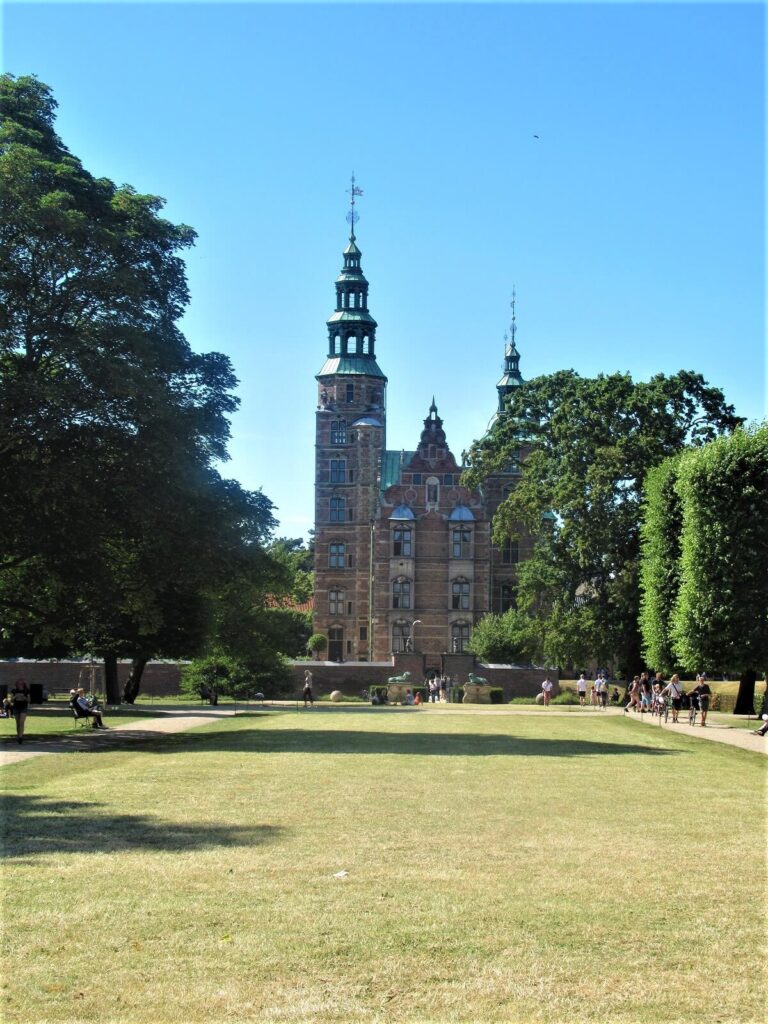Spanish Castles and Palaces with a Royal History
There are many Spanish Castles and Palaces with a Royal history. While the Spanish Royal family still owns some of Spain’s finest palaces, these castles are no longer Royal property but that doesn’t make them any less interesting.
These former Spanish Royal Castles and Palaces are rich with history. From Moorish castles in the south of Spain, to Gothic Royal residences in the heart of Barcelona. These castles and palaces (two of which are UNESCO World Heritage Sites) are worthy of a visit.
At the end of this post you’ll find a Google Map to make the plannng of your trip to one of these castles even easier.
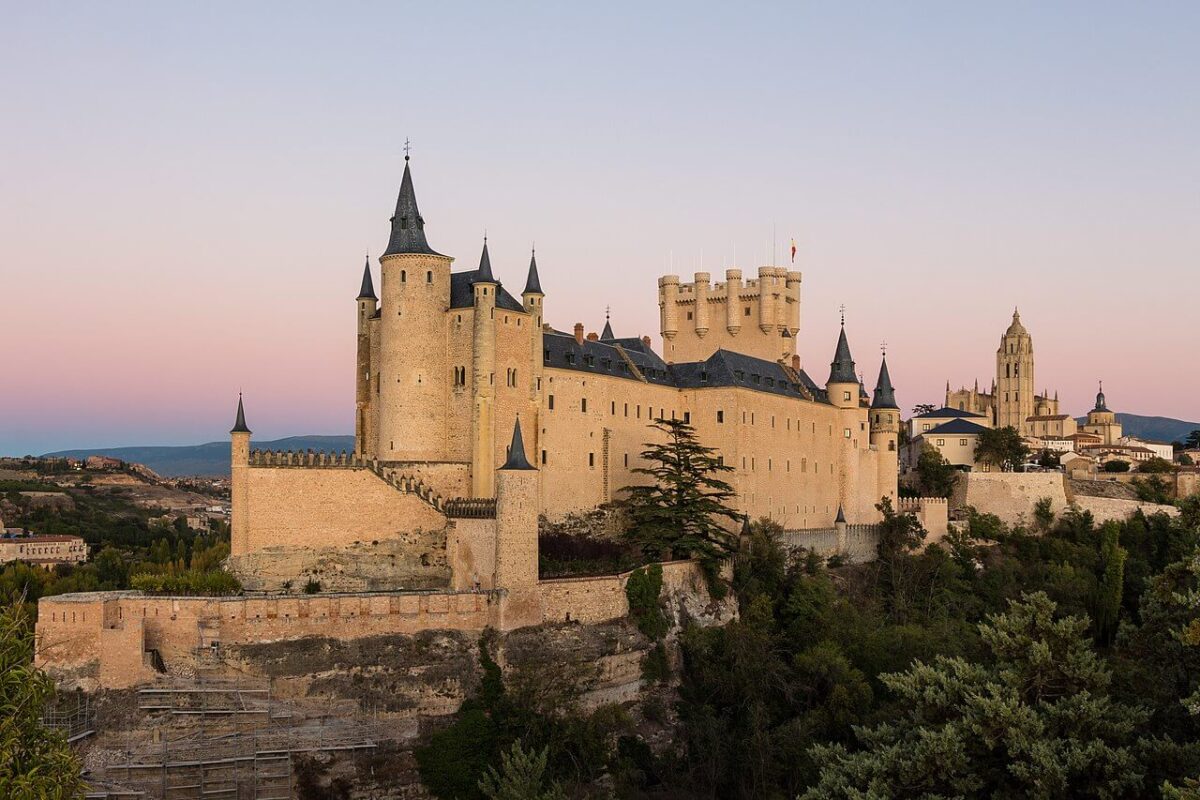
Alcázar of Segovia
The Alcázar of Segovia is a fortified castle and UNESCO World Heritage Site in Segovia. The castle sits on top of a rock between the confluence of the Eresma and Clamores rivers. In the 13th-century the castle got its Gothic appareance. The castle has been used as a Royal residence, a prison, and a military academy.
Alcázar of Segovia opening times: the castle is open daily, though closed on certain holidays. Visit the website for more information.
Address: Pl. Reina Victoria Eugenia, s/n, 40003 Segovia, Spain

Alhambra
The Palace and Fortress Alhambra in Granada is one of the best-preserved palaces of this historic Islamic world. Its Islamic architecture is world-famous and this is combined with Spanish Renaissance elements. No wonder the palace is a UNESCO World Heritage Site.
The building of the palace started in 1238 by Muhammed I Ibn al-Ahmar (the first Nasrid emir and founder of the Emirate of Granada). After the Christian Reconquista, it became part of the Royal Court. At Alhambra, Christopher Columbus received royal endorsement for his expedition.
In the 19th-century the palace gained renewed popularity among American and European travelers. Washington Irving wrote “Tales of the Alhambra” about the palace.

Generalife
Located next to the Alhambra Palace on the Hill of the Sun (Cerro del Sol) stands the Generalife, a summer palace built for the Nasrid rulers of the Emirate of Grenada. The palace was built in the 13th-century, though over the centuries it’s been remodeled several times. Surrounding the palace are historic and more modern 20th-century gardens.

Palace of Charles V
The Palacio of Carlos V is located inside the Alhambra. The Alhambra was the summer residence of Chrales V, but he wanted to make it a more prominent residence. Therefore he built the new square Renaissance Palace connected to the old Alhambra. Though the palace was never completely finished, it is one of the finest Renaissance buildings outside Italy.
Alhambra opening times: the palace is open daily, you can also visit Nasrid Palaces and gardens at night (this is not daily). For current opening hours visit the website.
Address: C. Real de la Alhambra, s/n, 18009 Granada, Spain
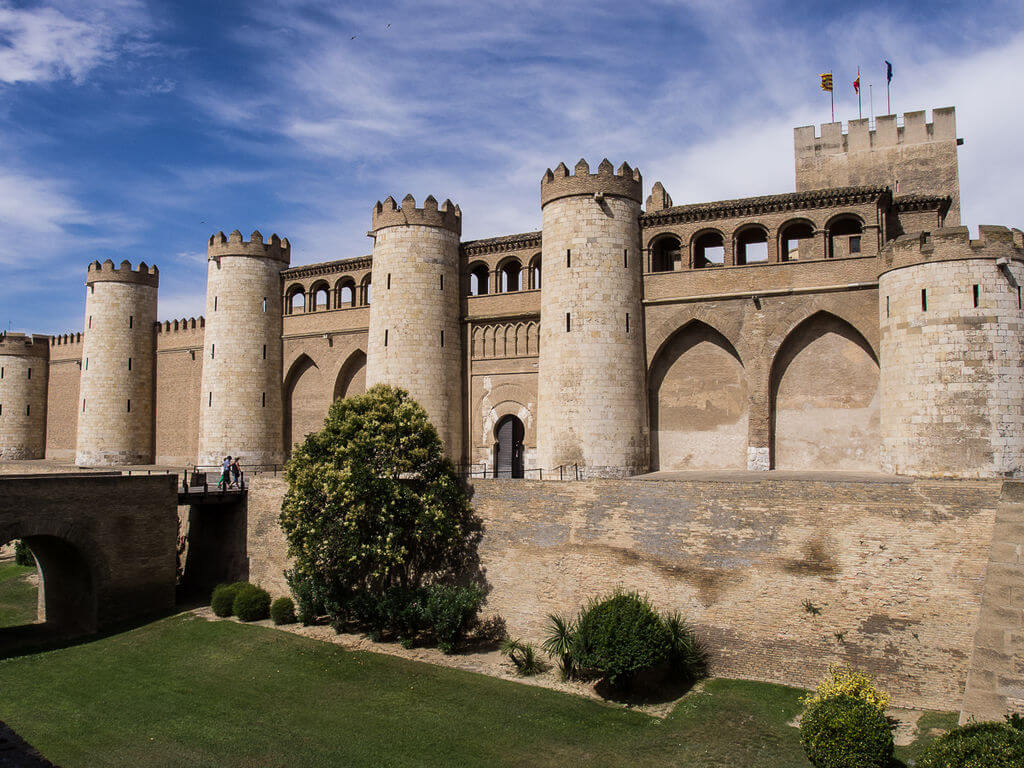
Aljafería Palace
The Aljafería Palace is a fortified medieval palace in Zaragoza. The palace (built in the 11th-century) is the only largely remaining example of Spanish Islamic architecture from that era. In the 12th-century the palace became the residence of the Kingdom of Aragón. Later it would become a military fortress, you can still see those Renaissance elements in the moat and gardens.
Aljafería Palace opening times: the palace is open daily, you have to book a ticket in advance. Visit the website for more information.
Address: Calle de los Diputados, s/n, 50003 Zaragoza, Spain
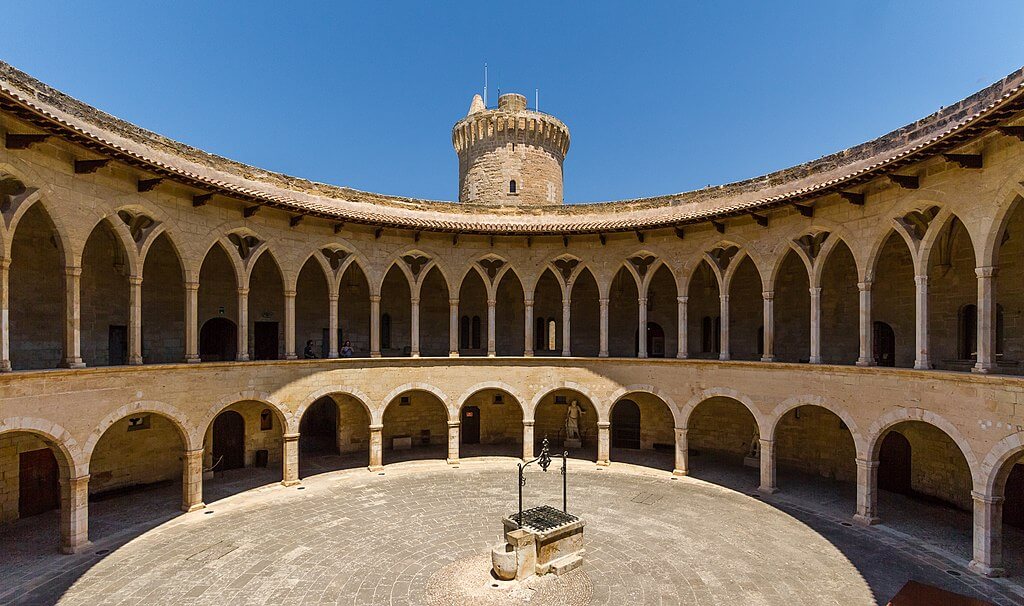
Castle of Bellver
Bellver Castle (Castell de Bellver) is a round Gothic castle on the island of Majorca. The castle was built for King Jaume II of Majorca in the 14th-century and it’s one of the few round castles in Europe. The castle was the residence of the Kings of Majorca until the 18th-century. Today, the castle is a museum and offers nice views over the surrounding landscape.
Bellver Castle opening times: the castle is open Tuesday-Sunday. (closed on 25 December, 1 January, 1 May, and Easter Sunday). Visit the website for current opening hours.
Address: Carrer Camilo José Cela, s/n, 07014 Palma, Illes Balears, Spain
See also: Royal Palaces and Castles in Spain (*that are still used or owned by the Spanish Royal Family)
Castle of Burgos
The Castle of Burgos (Castillo de Burgos) is a ruined castle sitting atop a hill in the city Burgos. The castle was a Royal residence but fell into disrepair until 1808 when Napoleonic troops transformed to serve their war. The castle was attacked by troops of the Duke of Wellington 4 years later. A year later the castle was ruined by the French troops. A spiral staircase, found in 1985, leads to a maze of tunnels, which can be visited today.
Address: Cerro de San Miguel, s/n, 09004 Burgos, Spain

Pedralbes Royal Palace
The Palau Reial de Pedralbes is a 17th-century country house which was given to the Spanish Royal family in 1918 by Count Eusebi Güell, after which is was remodeled in Noucentisme style. The palace garden house exotic and Mediterranean trees, the Herculas fountain by Gaudí, and three lighted fountains by Carles Buïgas. Only the gardens are open to visitors.
Address: Avinguda Diagonal, 686, 08034 Barcelona, Spain

Palau Reial Major
This group of buildings in the Gothic Quarter of Barcelona were the residences of the counts of Barcelona and the Kings of Aragon. The three buildings were built in the 14th and 16th-century.
The Saló del Tinell and the Chapel of St. Agatha are now part of the Barcelona City History Museum. The Palau del Lloctinent is now the home of the Museu Frederic Marès.
Barcelona City History Museum opening times: Tuesday-Sunday (closed on 1st of January, 1st of May, 24th of June, and 25th of December.
Museu Frederic Marès opening times: Tuesday-Sunday (closed on 1st of January, 1st of May, 24th of June, and 25th of December. Visit the website for more information.
Address: Plaça del Rei, s/n, 08002 Barcelona, Spain
The Royal Palace of Olite is a 13th-century Gothic castle that was built on the remains of a Roman castle. The Palace consists of the Old Palace (built in the 13th-century) and the New Palace (built in the 14th and 15th-century). It is one of the most luxurious medieval castles in Europe. The castle was severely damaged during the Napoleonic French Invasion, but restored in the 20th-century.
Royal Palace of Olite opening times: The castle is open to visitors. Visit the website for current opening hours and to book your ticket.
Address: Pl. Carlos III El Noble, 4, 31390 Olite, Navarra, Spain

Palacio de la Magdalena
The Magdalena Palace is an early 20th-century palace on the Magdalena Peninsula in Santander. The eclectic palace was a seasonal residence for the Spanish Royal Family from 1913 to 1930. The palace is now an event venue but can also be visited for a tour. Visit the website for more information.
Address: Av. de la Magdalena, 1, 39005 Santander, Cantabria, Spain

Miramar Palace
The Miramar Palace (Palacio de Miramar) is a former Royal residence on the La Concha Bay in San Sebastián. The English-style palace with Neo-Gothic elements was built in 1893 for Maria Christina (wife of Alfonso XII). The gardens, which are open for visitors, overlook La Concha Bay.
Address: Paseo Miraconcha, 48, 20007 Donostia, Gipuzkoa, Spain
Visit the Spanish Castles and Palaces with a Royal History
The blue pins are palacas and castles that are stll used (or owned) by the current Royal house. The red pins are the castle and palaces with a Royal history, which you could read about in this article.

